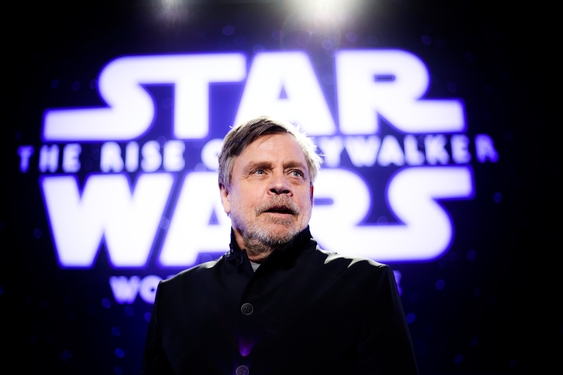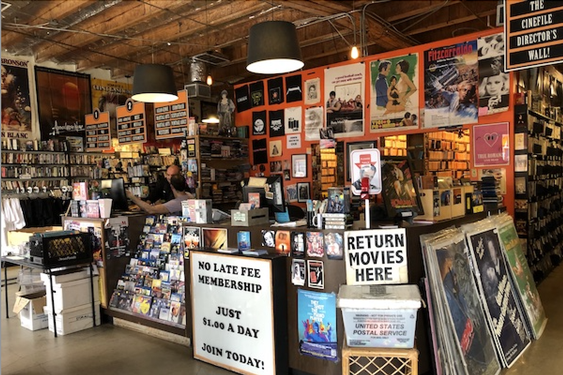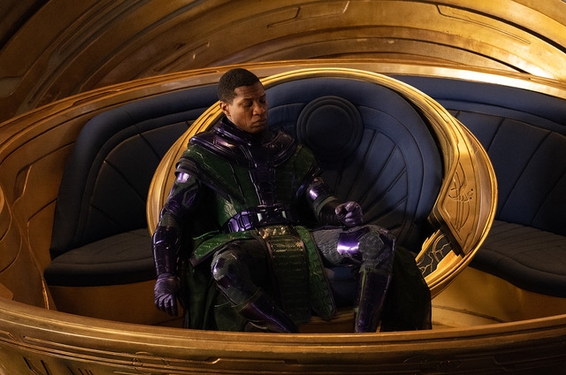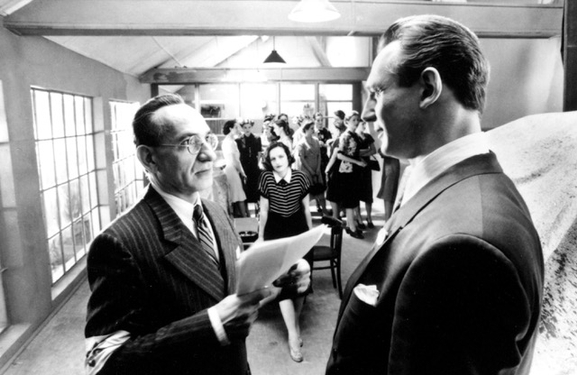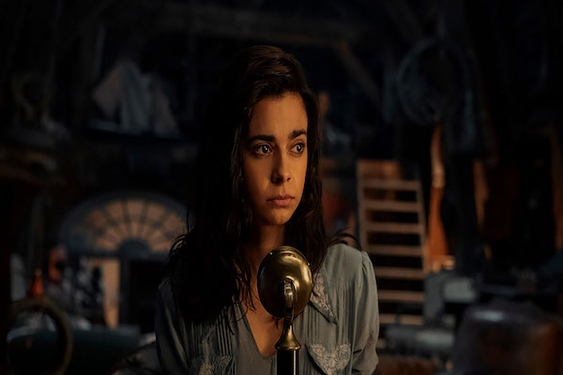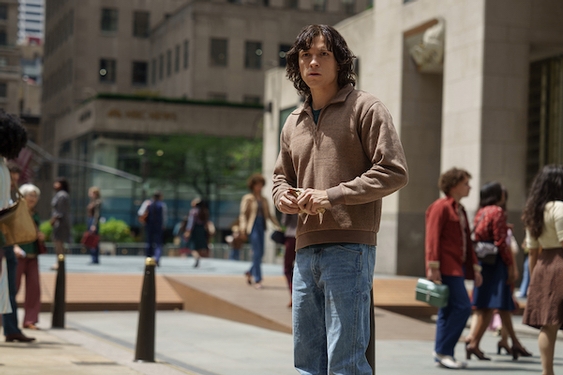Samsung has installed the first LED movie screen in North America at the Pacific Theatres Winnetka in L.A. Revolutionary in and of itself, if could revolutionize the exhibition business if it takes off among theater operators.
The solid, black, almost 33.8 ft. wide, 17.7 ft. high screen — the middle of three sizes that will eventually be available to exhibitors under the Samsung Onyx brand — is illuminated by nearly 9 million pixels. It offers true dark blacks, borderline-blinding whites and super-bright ranges of all the colors in between, not to mention the most realistic skin tones you may ever have seen in a theater.
Already in operation at a few venues in Asia and Europe, Onyx also features a unique sound system developed by the Korean electronics company’s Northridge-based Harman subsidiary’s JBL Professional cinema sound audio division.
“We have a million-to-one contrast ratio, we have revolutionary true blacks and we have unparalleled dynamic range,” Nick Conti, Samsung Electronics America’s senior business development manager for cinema, said during an Onyx demonstration recently.
“We really looked at redesigning how to do this audio system,” added Daniel Saenz, Harman Professional’s cinema solutions manager. “When you start thinking about LED screens, you realize that, compared to traditional cinema, you cannot have the speakers directly behind the screen. That’s just not possible here (since Onyx is made of solid materials, while most movie screens have lots of tiny holes for sound to come through). So we moved (our) channels above the screen, and we implemented some special EQ that Samsung was working on. There’s a lot of innovation in that … for high output and clarity.”
A demonstration of how Onyx delivers Steven Spielberg’s visual- and audio-information packed “Ready Player One” followed the remarks. The movie’s black title card indeed looked, well, onyx, while the more darkly lit adventures in its videogame world boasted noticeably more detail and clarity than this reporter saw at a screening a few weeks earlier at Hollywood’s TCL Chinese 6.
The movie’s sound, which is not only enveloping and seems to come from precise images onscreen, also feels natural thanks to JBL reflector horns on the auditorium side walls that bounce certain sonic registers off the screen and to viewers’ ears properly.
Experience-wise, that made every engine rev and crash crunch in “RPO’s” huge road race sequence sound distinct to each vehicle. And when King Kong came galumphing and pounding after the racers, the whole theater and it’s plushly-upholstered leather seats shook with temblor force.
Whether or not audiences will flock to such an experience and make it worthwhile for exhibitors to install Onyx remains to be seen. Conti would not answer questions about the system cost, though he did point out that not having to worry about projector sightlines (or projectionists) with the essentially backlit Onyx could make room for additional auditorium seats, and that six months after Onyx was installed at a theater in Korea last year, its average occupancy rate for all of 2017 rose by 12 percent.
“As far as whether it’s going to grow? Probably,” said Patrick Corcoran, vice president and chief communications officer for the National Association of Theatre Owners, the world’s largest exhibition trade organization. “With any technological change or innovation or expansion in the theatrical space, you have to look at two questions. One, will it sell more tickets? And the other question is, does the audience care about it? Whether you can sell more tickets or charge a premium price has to be balanced against the cost of installation and running it.”
One of the more recent presentational breakthroughs, Dolby Cinema, which combines the San Francisco Dolby Laboratories’ Vision laser projection and Atmos sound systems, has been healthily growing. The company recently announced 20 Disney films that have or will be shown in its format, which is in more than 90 mostly AMC theaters in North America (some 20 of which are in Southern California). Dolby Cinema has approximately 360 screen commitments around the world.
“Name a blockbuster film in the last couple of years, we’ve had it in Dolby Cinema,” the division’s vice president Frank Bryant said while touting Dolby’s own bright, dynamic color range, image definition and moving, synchronized sound. He’s convinced that while people are watching movies in more ways than ever, many are still willing to pay more to come to theaters with topflight presentation, along with other amenities such as recliner seats, cocktail and food-delivery service and reserved seating.
“Some of that is because of continuous improvement,” Bryant reckoned. “Any one of your readers can think about what cinema was like when they were a kid versus what it’s like today, how different it is. We intend to keep improving that experience; we’re always working on new audio and visual technologies.”
That said, Bryant sounded cautiously impressed by what the competition’s Onyx could be.
“LED delivers great pictures,” he said. “Cracking that audio problem is definitely something that the industry has got to work on. But we run into ecosystem issues like that anytime we do something with new technology.”
Onyx may have cracked another issue that projection systems simply can’t overcome. There is little to no image degradation on the big LED screen when the auditorium house lights are on, which could enable theater operators to use the rooms for group videogaming events, children’s parties, corporate presentations and other purposes yet to be imagined.
“Aside from it looking and sounding the best, I think the real benefit for cinemas with this are the new opportunities to provide different types of experiences in their theaters,” Carl Jacobson, a marketing communications director for Harman Professional Solutions, said of Onyx. “Some of those can happen at times when you don’t have people normally going to the theater. Even being able to use ambient lighting differently … It’s going to be interesting to see those things that we did not anticipate that people are going to do with this.”
Brighter theater spaces will also be a boon for operators who offer in-seat dining service — if not for cinema purists who hate the very idea of waiters running around during a screening. Still, if Samsung can sell exhibitors on that Onyx possibility, sales could be hot.
“I wouldn’t relate it to a particular system, but comfort is something that audiences have noticed far more,” NATO’s Corcoran said of recent theatrical improvements. “The level of projection, of sound and audio quality, in the movie theater is so far above what it was a decade ago, the baseline expectation is much higher.
“The real change has been in the comfort of the experience and the amenities that are coming in, whether that’s in-theater dining or cocktail service,” Corcoran continued. “Those elements are really new to a lot of people and people really are liking it. You’re seeing an immediate effect in theaters where they’ve made that changeover.”
———
©2018 The Mercury News (San Jose, Calif.)
Visit The Mercury News (San Jose, Calif.) at www.mercurynews.com
Distributed by Tribune Content Agency, LLC.



